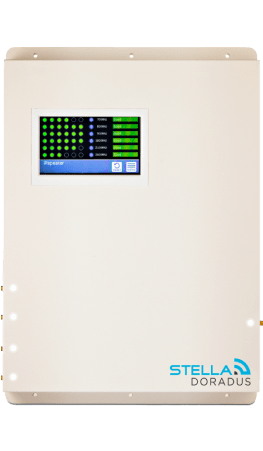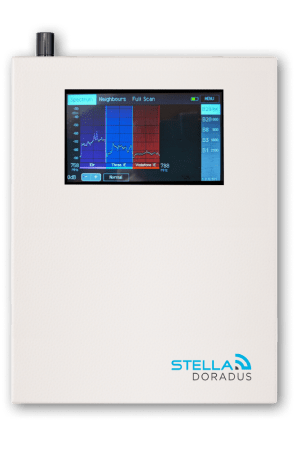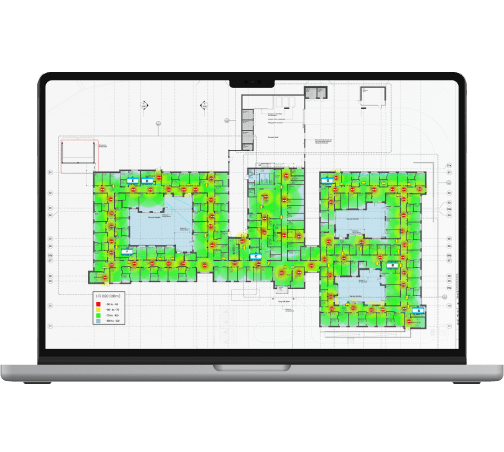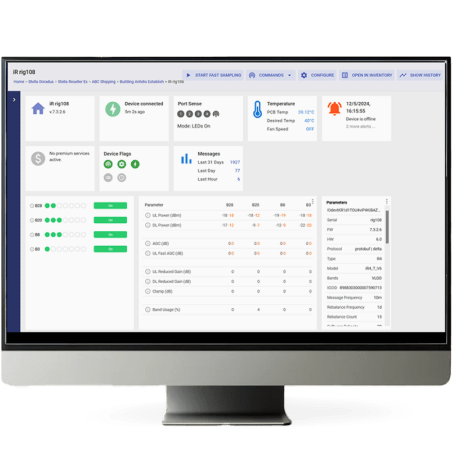VoWIFI – Voice over Wi-Fi (WiFi calling). A voice service that lets users place and receive calls over a wireless internet connection (WiFi), as opposed to using a cellular signal.
VoLTE – Voice over Long-Term Evolution (4G calling). This technology offers the ability to make voice calls via the LTE/4G mobile network.
3G (HSPA or High-Speed Packet Access) (symbol H+) – allows for voice calls and an internet speed of between 10 and 100 Mb/s. This works for all normal data usage such as emails and app notifications including video.
GSM (2G) – (Global System for Mobile Communications). This is a standard that specifies how 2G (second generation) cellular networks operate. GSM was a significant improvement over the first generation of cellular networks and represented a transition from analog to digital telecommunications. Today, 2G networks are significantly slower than other cellular networks, and in several countries, 2G networks are being switched off.
As of today, there are 4 main voice protocols for mobile voice transmission. VoWIFI (WiFi calling), VoLTE (4G calling), 3G and GSM.
GSM is the legacy protocol dating as far back as the 1980s. It has been improved over many years and is still a very reliable and heavily used service today. As new generations of services have evolved (2G/3G/4G/5G), the quality of voice communication has improved.
There is a noticeable improvement in the voice quality between GSM (2G) and 3G, for example. The quality improvement is less noticeable but still apparent between 3G and 4G (5G is similar to 4G).
These improvements from one generation to the next are largely due to more sophisticated algorithms and larger bandwidth.
Cellular Services Vs WiFi Service
There is a fundamental difference between GSM/3G/4G calling and WiFi calling.
GSM/ 3G/ 4G are all cellular services using mobile towers, whereas WiFi calling is a data service that uses the local ethernet or WiFi. These are fundamental differences and each has advantages and disadvantages.
The main difference is that WiFi calling uses the home WiFi router and does not need a SIM card, whereas GSM/3G/4G calling does not rely on the WiFI router. Instead, the phone connects directly to the operator’s cell tower, and a SIM card is required.
Most Robust Calling Service in a building
Every calling service relies on the availability of good quality signal. If the signal is poor, the service will be poor. Some systems are better at providing a quality signal throughout a building than others.
WiFi Repeaters or Access points
Typically WiFi access points are used to distribute the WiFi signal throughout a building. Clients can log into the WiFi network and then use WiFi calling. However, it is a considerable challenge to install these access points in such a way so as to provide effective coverage throughout the building. There are many limitations within the WIFI standard that can result in black spots. Customers who use VoWIFI often end up having to be very conscious of where the WiFi router is and make sure they are near it during important calls. It is not an acceptable solution for the enterprise market.
Cellular repeaters
Mobile operators have spent the last 40 years working on algorithms and technology to make sure calls stay connected even in the most challenging environments. With regards to quality call coverage inside a building, cellular coverage is far superior to WiFi coverage. Not only does cellular have many more frequencies to choose from to keep the call connected (700MHz-3500MHz), but also several services (2G/3G/4G/5G). The cellular system can use 4G calling, 3G or GSM to keep the call connected.
Cellular
Advantages of GSM calling
- Very robust service – proven over time.
- Can maintain calls in poor signal conditions.
- Works on all phones, IOT devices.
- Low power consumption.
- Repeaters can amplify GSM around the building.
Disadvantages of GSM calling
- Call quality is not great, compared to other services.
Advantages of 3G(H+) calling
- Good call quality – better than GSM but worse than 4G.
- Better than 4G at maintaining calls in poor signal zones, but not as good as GSM.
- Repeaters can amplify 3G around the building.
- All phones can use 3G calling.
Disadvantages of 3G calling
- Not as good as GSM for maintaining a call in poor signal zones.
Advantages of 4G calling (voLTE)
- Fast call setup
- Very good call quality.
- Repeaters can amplify 4G calling around the building.
- All new phones will prefer to use 4G calling as it uses spectrum more efficiently.
Disadvantages of 4G calling
- Not available on older phones.
- Not as robust as GSM – (in poor signal areas, GSM and 3G will perform better)
WiFi
Advantages of WiFi calling:
- Cost-effective solution to setup for homeowners – as routers are cheap.
Disadvantages of WiFi calling:
- When walking from inside a building to outside a building, the call will drop as the user switches from WiFi calling to 4G calling.
- Roaming NOT available – WiFi calling restricted home country.
- Only effective when user is in range of router – requires strong signal.
- If other people are using the router at the same time, calls can be dropped.
- Not effective for larger buildings- difficult to scale effectively.
- Security/ privacy issues on (public WiFi) – Public WiFi is at risk of man-in-the-middle attack
- Onerous management required of public WiFi systems, managing everyone’s logins/sessions/data.
- Potential legal risks managing client’s login sessions.
- WiFi calling is NOT free. Operators change per call as normal, as if it were a cellular call.
- Text messages cannot be sent or received over Wi-Fi Calling.
At Stella Doradus, we offer a range of repeater solutions to help installers make an educated decision to optimise the channel of communication for the designated devices. These can differ in terms of coverage, ease of installation and remote monitoring capabilities. Learn more by visiting our Installer Zone.





